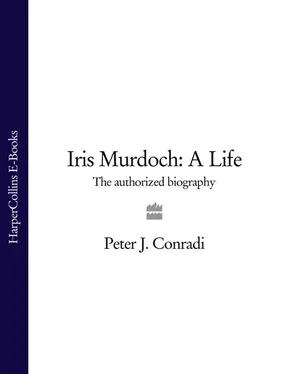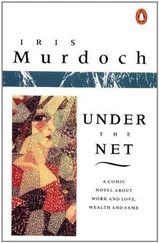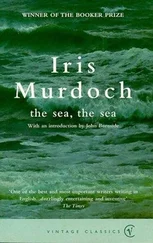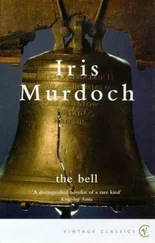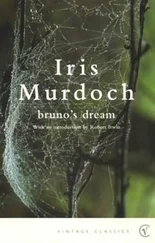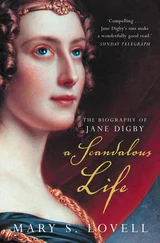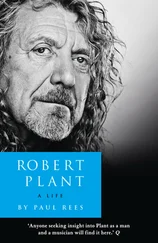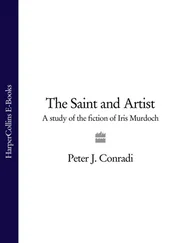Rene’s family represents another strain in the history of Protestant middle-class Ireland: Church of Ireland rather than Presbyterian, Dublin-based rather than from Belfast, former ‘plantation squires’ rather than ‘plantation farmers’. 31Not yeoman farmers and merchants like the Murdochs, the Richardsons, a complex and highly inter-related family, began as major land-owners in the seventeenth century and became minor gentry in the eighteenth, when Catholics were debarred from sitting in Parliament and holding government office, as well as suffering many petty restrictions, and Protestants had a virtual monopoly of power and privilege. Thereafter, the family’s status declines. It mattered to Iris that she was grandly descended from Alexander Richardson, ‘planted in Ireland in 1616 to control the wild Irish’, 32as she put it, and living at Crayhalloch in 1619. Readers of An Unofficial Rose will recognise the similar name of the house ‘Grayhallock’, with its links to the wealthy linen merchants of County Tyrone. Alexander Richardson’s family motto ‘Virtuti paret robur ‘, is proudly quoted in The Oreen Knight, and translated as either ‘strength obeys virtue’ or ‘virtue overcometh strength’.
In the 1990s an amateur genealogist from Ulster, Arthur Green, wrote up his patient investigations into Iris’s family history. He showed, amongst much else, that she was ‘ una bambina di sette mesi’, painted her parents’ marriage – almost certainly accurately – as a hasty register office affair, 33and tried to show that her claims to be descended from the Richardsons of Drum Manor, and her identification with an Anglo-Irish background, were, in his word, ‘romanticism’. He also queried whether her father’s civil service status on his retirement in 1950 was as exalted as she believed. Green, at the suggestion of A.S. Byatt, sent these findings to Iris’s publishers, Chatto & Windus. 34Iris defended her pedigree with (at first) some stiffness, later lamenting that she had not asked more questions of her parents, and so been better-informed. She referred Green to O’Hart’s History of Old Irish Families, 35 telling him she had lodged copies of relevant pages with her agent Ed Victor for safekeeping. Both Rene’s father Effingham Lynch Richardson and her grandfather Robert Cooper Richardson merit a mention in O’Hart, which is noted for being, before 1800, notoriously untrustworthy, a source of myth, not fact. Given the burning of papers during the Troubles of 1921–22, the chances of establishing the truth seemed remote.
Fortunately, and unbeknownst to Iris, at the start of the twentieth century the Rev. Henry G.W. Scott, Rector of Tullinisken in County Armagh, had documented these Richardsons well. 36James
I indeed granted the original Alexander Richardson Drum Manor, or Manor Richardson, in County Tyrone. Alexander’s son William married Mary Erskine, heiress to the Augher Castle estate, County Tyrone, which in turn descended to their son Archibald. William left Drum Manor to his second son Alexander, who in 1682 married Margaret Goodlatte of Drumgally. His third son William, as well as inheriting lands near Augher, also obtained a lease of lands from his brother Alexander in the townland of Tullyreavy on the Drum Manor estate, where he built a house by the lake known as Oaklands, Woodmount or Lisdhu. O’Hart 37erroneously identified Crayhalloch with Drum Manor Forest Park and also with Oaklands, as if all were different names for one house, instead of separate Richardson estates, from each of which Rene could claim descent.
William (d.1664) and Mary Erskine had three further sons. The eldest, James, married Mary Swan (1671–1740), heiress of William Swan, and their son Alexander (1705–71) succeeded to the estate of over a thousand acres at Farlough Lodge, strikingly situated above the Torrent river: a small five-bay, two-storey Georgian house with a dressed sandstone front and a square central porch 38near Newmills, County Tyrone, not far from Cookstown. Through the eighteenth century the head of the family was churchwarden and member of the vestry of Drumglass and Tullinisken parishes, overseer of the roads and an officer in the militia. Iris’s great-great-great-grandfather, for example, was Alexander’s eldest son John Richardson of Farlough (1727–85), who married Hannah Lindsay in 1757 and was a JP, High Sheriff of Tyrone in 1778, and Captain of the Dungannon Volunteers in 1782. Owning more than a thousand acres, successive heads of the family lived, it can be assumed, in some comfort as modest country gentlemen.
The Richardsons also produced serious artistic talent and had continuing artistic tastes, well before Iris emerged to give them retrospective interest. They formed a large extended family which included two women writers, one of them distinguished. Iris’s great-great-aunt Frances Elizabeth Fisher (née Richardson) published well-received volumes of verse such as Love or Hatred (three volumes) and The Secret of Two Houses (two volumes), also a book about Killarney. The better-known is Ethel Florence Lindesay Richardson (1870–1946), who wrote under the name of Henry Handel Richardson. She was the daughter of Walter Lindesay Richardson MD, model for Richard Mahony in her trilogy The Fortunes of Richard Mahony (1917–21). Henry Handel Richardson was second cousin to Rene’s father Effingham Lynch Richardson. 39Like Rene she was musically talented, going to Leipzig to study music before turning to writing. She spent her early life in Australia and then Germany, belonging, like her cousin Iris, to a broad British and European and not merely an Irish world. 40In her unfinished autobiography Myself When Young (1948) she refers to her strongly Protestant Irish Richardson relations, and their penchant for odd names ‘such as Henry Handel and a Duke, more than one Snow and several Effinghams’. In The Unicorn Iris was to award her foolish character Effingham Cooper a key moment of insight.
The nineteenth century saw a downturn in Richardson fortunes, with the sons of yet another Alexander Richardson (1758–1827) squandering part of the £8,000 realised from sale of the Farlough estate. The phenomenon of downstart Anglo-Irish gentry was so familiar as to earn its own ingenious characterisation. Sir Jonah Barrington, whose racy memories of Irish history both Yeats and Joyce plundered, defines as ‘half-mounted gentlemen’ the small grantees of Queen Elizabeth or Cromwell living off two hundred acres. The Richardsons had been grander, somewhere between ‘gentlemen every inch of them’, whose finances were ‘not in good order’, and ‘gentlemen to the backbone’, from the oldest settler-families, generally also ‘a little out at elbows’. 41Most of Iris’s immediate maternal forebears were minor men-of-law – Dublin was a litigious city with many attorneys – belonging to the Protestant Irish lower-middle class. Rene’s paternal grandfather Robert Cooper Richardson, grandson to Tyrone’s High Sheriff,
born in 1827, and son of Robert Lindesay Richardson, a revenue officer, was a clerk in the Dublin Probate Court. Robert Cooper’s son by his first wife Hannah, Effingham Lynch Richardson, a ‘law assistant’ born in 1857, after a first marriage without issue made a second to Elizabeth Jane Nolan, daughter of William Nolan Esquire. 42Effingham and Jane had two daughters, Gertrude Anna (born 1891) 43and Irene Alice (born 29 March 1899), mother-to-be of Iris.
Rene’s father Effingham Lynch Richardson died on 6 July 1904, not long after Ulysses’ ‘Bloomsday’, one tradition making his death, officially from ‘erphelsocora of the groin’, drink-related. 44The fact that the Rev. A.W. Barton, Rector of St George’s, rather than one of his three curates, took the funeral service, suggests that the family were actively involved in the life of the Church of Ireland at parish level. Iris also claimed – on no evidence – Catholic ancestors. 45Curiously, a second Effingham L. Richardson was shown living at 40 Iona Road, Glasnevin, Dublin, until 1947, and working until 1934 at the Dublin Ministry of Labour. This second E.L. Richardson, a first cousin of the first, was re-baptised as a Catholic before marrying in 1883. 46Rene and her elder sister Gertie took ‘Cooper’, not among the baptismal names of either, as their middle name; they lived thereafter in the house of their grandfather Robert Cooper Richardson, and the twice-adopted name suggests gratitude to him for his generosity in fostering them after their father’s death. The only story Rene would tell of her grandfather was that, though a man of industrious habits who at first kept his family well, when the 6 p.m. mail van arrived he would be facetious about this, in his Dublin manner. It was a signal for his first drink of the evening.
Читать дальше
